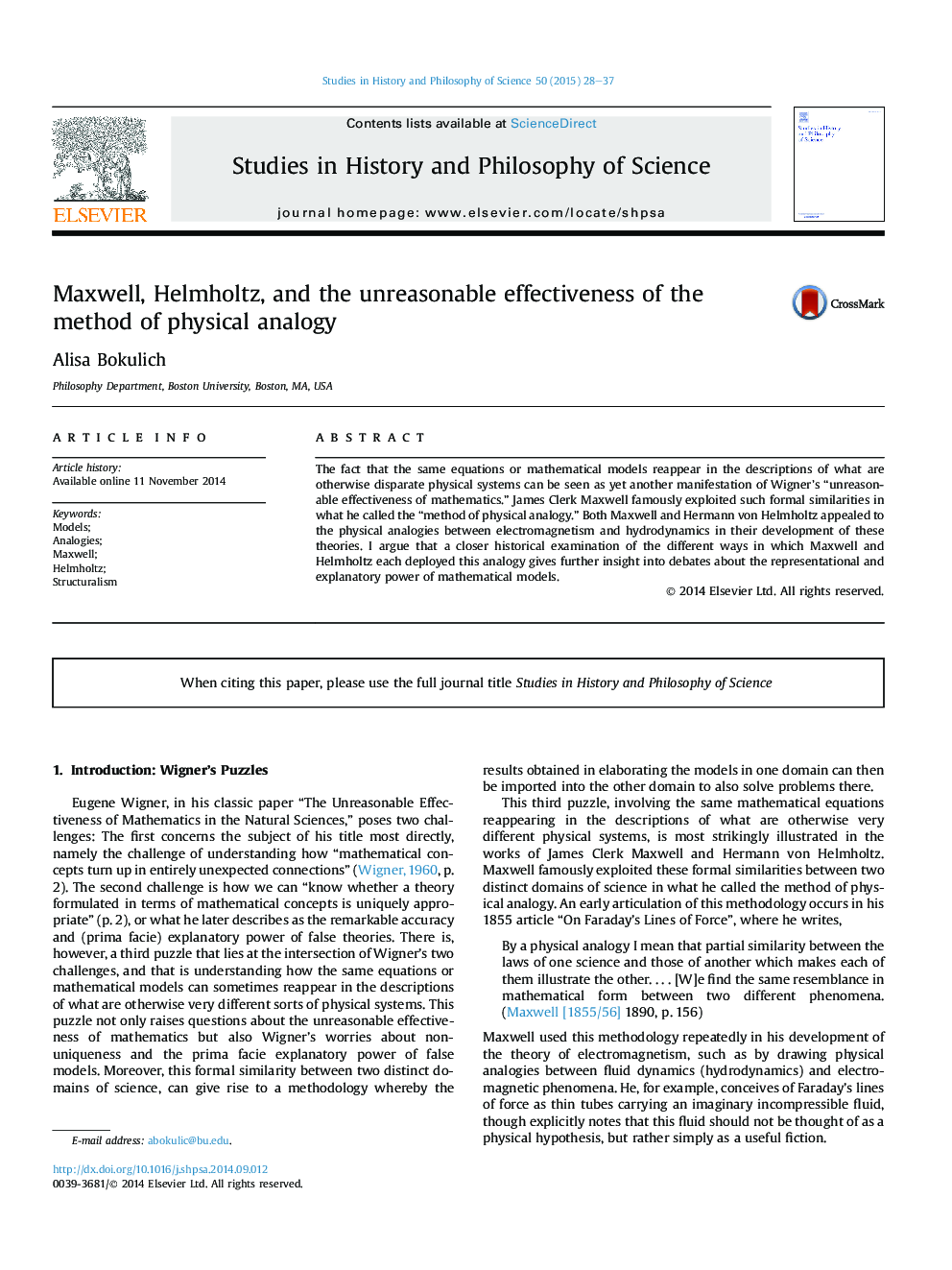| Article ID | Journal | Published Year | Pages | File Type |
|---|---|---|---|---|
| 1160541 | Studies in History and Philosophy of Science Part A | 2015 | 10 Pages |
•New insights into Maxwell's methodology, discoveries, and scientific structuralism.•New insights into Helmholtz's methodology and discovery of laws of hydrodynamics.•Solution outlined to Wigner's “unreasonable effectiveness of mathematics”.•New account of the representational power of mathematics.•Discussion of importance of analogies in science.
The fact that the same equations or mathematical models reappear in the descriptions of what are otherwise disparate physical systems can be seen as yet another manifestation of Wigner's “unreasonable effectiveness of mathematics.” James Clerk Maxwell famously exploited such formal similarities in what he called the “method of physical analogy.” Both Maxwell and Hermann von Helmholtz appealed to the physical analogies between electromagnetism and hydrodynamics in their development of these theories. I argue that a closer historical examination of the different ways in which Maxwell and Helmholtz each deployed this analogy gives further insight into debates about the representational and explanatory power of mathematical models.
